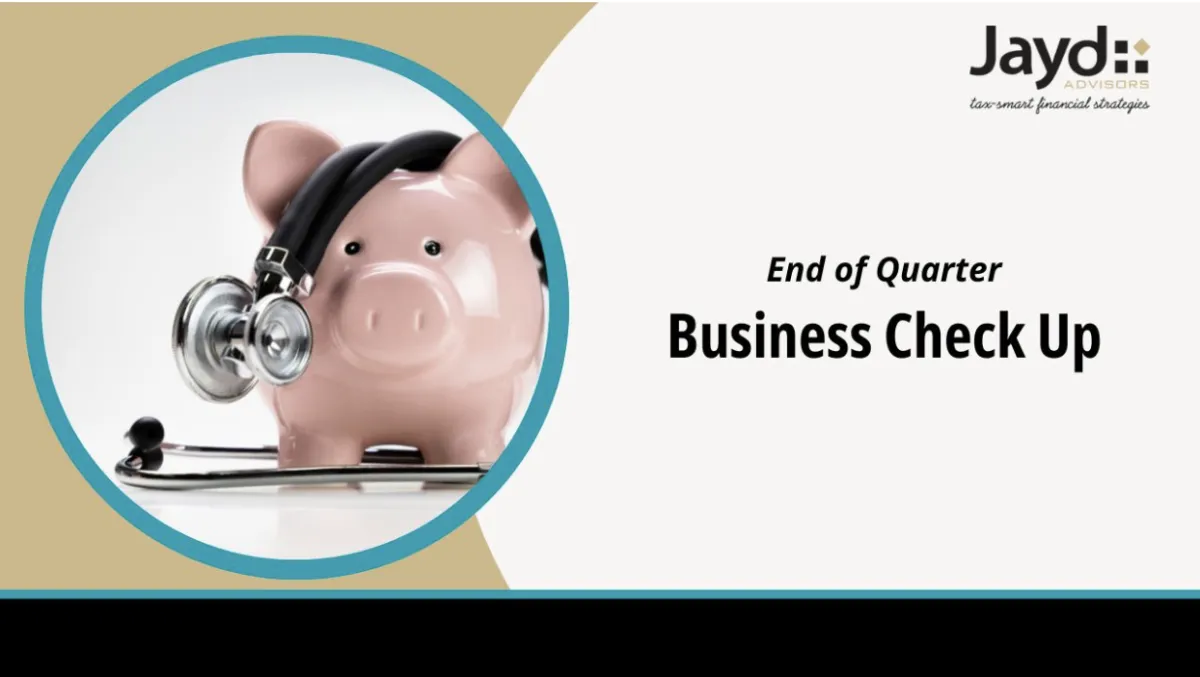
Why You Need an End-of-Quarter Financial Check-Up
Why You Need an End-of-Quarter Financial Check-Up
As the third quarter comes to a close, it's the perfect time to pause and assess your business's financial health. A proactive approach now can set you up for a smooth year-end and a strong start to the next fiscal year. Here are the key financial best practices to focus on as you wrap up Q3.
Budgeting and Financial Review
This is the moment to compare your actual financial performance against the budget you set at the beginning of the year. Take a deep dive into your financial statements, including your profit and loss statement and cash flow statement.
Analyze Profitability: Review your P&L statements to identify trends in income and expenses. Where did you overspend? Where did you outperform? Use these insights to make any necessary adjustments for the remainder of the year and to create a more accurate budget for the next.
Assess Cash Flow: Ensure you have enough liquidity to cover upcoming expenses, like fourth-quarter estimated tax payments. This is also a good time to consider prepaying certain expenses to lower this year's net income, or delaying them until January, depending on your tax strategy.
Set the Next Year's Spending Plan: Based on your review, start drafting your spending for the upcoming year. Be realistic and factor in potential changes like market fluctuations or new business goals. Overestimating costs is a good rule of thumb—it's better to have a surplus than a shortfall.
Review and Update Savings Goals
Revisit your business savings goals to see if you are on track. Whether you are saving for a new equipment purchase, an emergency fund, or a major business expansion, now is the time to check your progress.
Check Your Emergency Fund: Experts often recommend having three to six months of operating expenses in an emergency fund. Review your current balance and, if needed, adjust your savings contributions to meet this target.
Realign with Goals: Have your business goals changed? Maybe you are ahead of schedule on a savings goal. If so, you might be able to redirect funds toward other priorities or accelerate your progress. If you are behind, look for areas where you can reduce non-essential spending.
Automate Savings: To make saving easier and more consistent, consider setting up automated transfers from your business checking account to a dedicated savings account.
Update Compensation and Staffing Plans
Compensation is a critical component of your overall budget and a key driver of employee motivation and retention. The end of the third quarter is an ideal time to assess and plan for any changes.
Review and Benchmark: Evaluate your current compensation structure against market rates. Are you paying your employees fairly for their roles and responsibilities? This can help you attract and retain top talent.
Consider Bonuses and Incentives: If your business has had a successful year, think about how to reward your team. Planning for bonuses or performance-based incentives now allows you to budget for these expenses effectively.
Communicate Transparently: If you plan on making any changes to compensation or benefits, begin to outline a communication strategy. Being transparent about the reasons for the changes can help build trust and ensure a smooth transition.
Taking control of your finances now means you’ll be prepared for the future. By reviewing your budget, savings goals, and compensation plans this quarter, you're not just closing out the year—you're strategically setting your business up for success.
Have questions about how these financial practices can impact your tax strategy? Contact us https://www.jaydadvisors.com/contact
